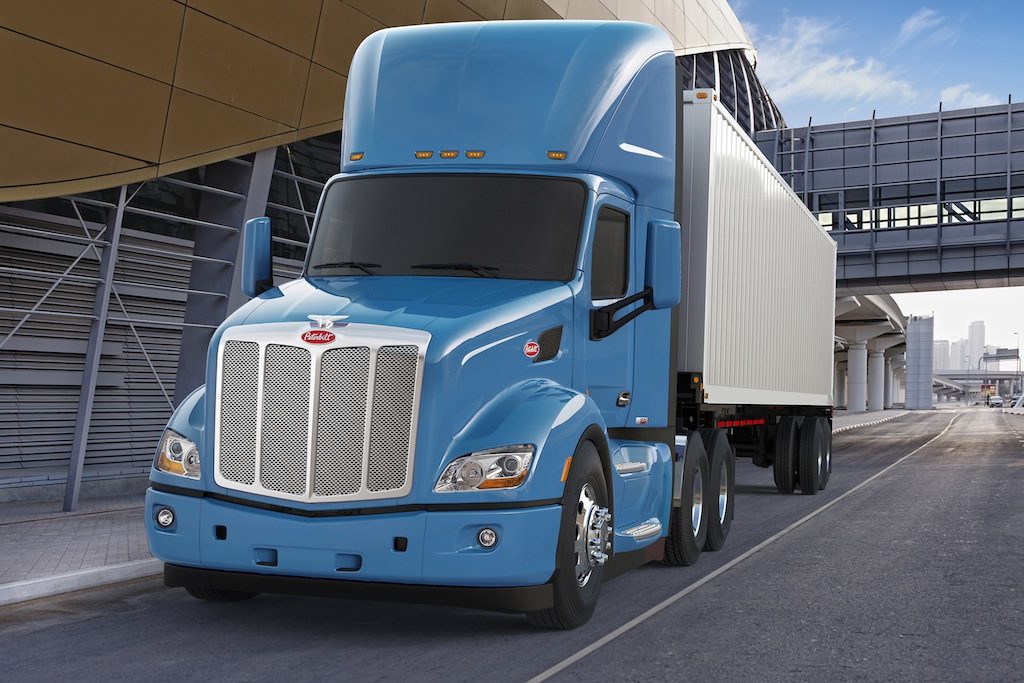Based on the success of the aerodynamic Model 579 EPIQ sleeper truck, Peterbilt has introduced the aerodynamic, fuel efficient Model 579 EPIQ daycab.
Peterbilt Motors Co. announced the new model during the ATA Management Conference & Exhibition, which ends today in Las Vegas.
“Fleets wanting to operate fuel-efficient daycabs have been an underserved market, and Peterbilt is pleased to provide the new Model 579 EPIQ daycab,” said Robert Woodall, Peterbilt’s assistant general manager of sales and marketing. “Its comprehensive, optimized aerodynamic package, fuel-efficient powertrain and other technologies can provide customers up to 14 percent improved fuel economy. It is ideal for fuel-conscious daycab fleet customers in regional, tanker and bulk haul applications, helping lower operating costs and bringing new levels of productivity, uptime and driver satisfaction.”
Customers can specify the full aero package through Peterbilt dealerships for simplified ordering or customize it for specific needs, such as an aero bumper-to-back-of-cab package or an aero bumper-to-front-tandem package. The aerodynamic components and packages are also available through Peterbilt dealerships for aftermarket installation.
Peterbilt’s Model 579 EPIQ daycab is available with the fuel-efficient Paccar MX-13 or MX-11 engine in a wide range of horsepower and torque ratings. Fuel efficiency is further enhanced with the Paccar MX engine paired with the Fuller Advantage automated transmission. This powertrain features precise communication and proprietary control logic between the engine and transmission.
The three-piece collapsible roof fairing is an industry-unique design that in a few minutes allows the roof fairing to be lowered. This allows the truck to be transported without the need to completely remove the roof fairing, as is common with most daycabs.
Other features of Peterbilt’s Model 579 EPIQ package include low rolling resistance tires, the SmarTire Tire Pressure Monitoring System and a single horizontal exhaust configuration.



